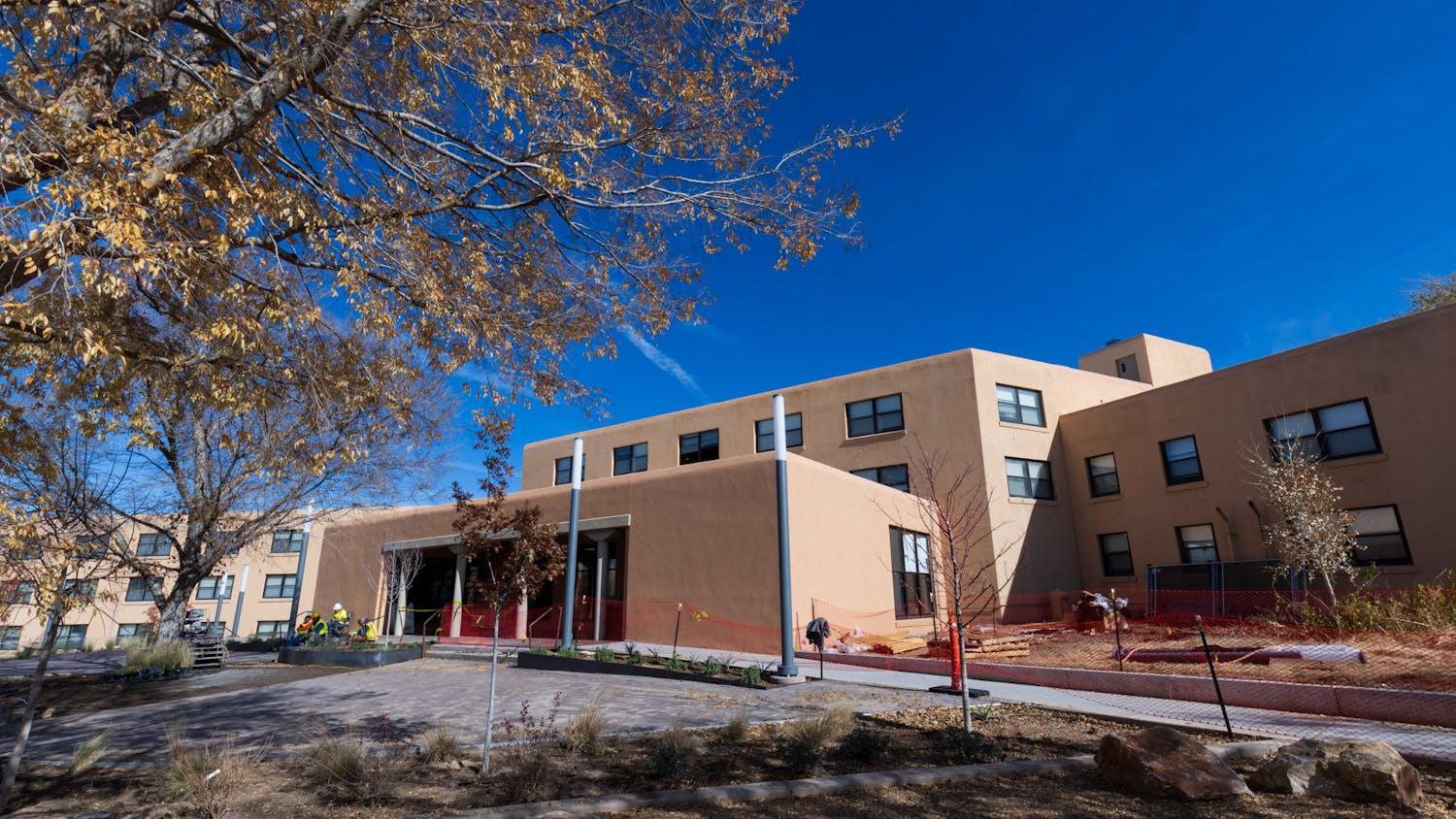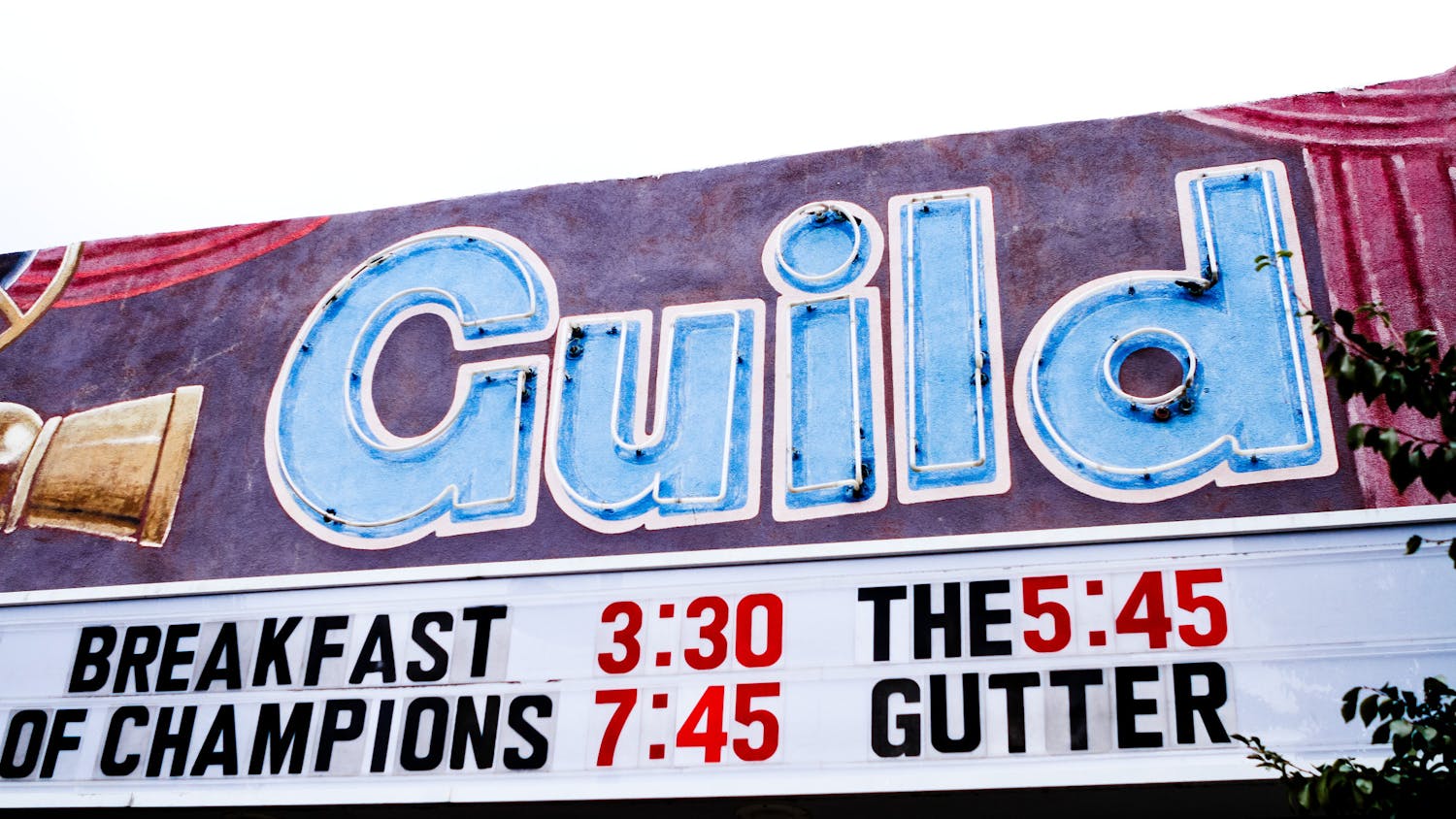A UNM arts professor is being honored by having her work displayed at an exhibit in the nation’s capitol this month.
Fine arts professor Mary Tsiongas’ video artwork, “The Mercurial Dog Anticipates Her,” is being featured in the 2015 Women To Watch exhibition at the National Museum of Women in the Arts.
“It was a wonderful surprise, and I was just thrilled to have it go to Washington, D.C.,” Tsiongas said.
According to the NMWA website, Women To Watch features emerging and underrepresented artists from various states and countries, each exhibition focuses on a specific medium or theme chosen by NMWA’s curators.
This year’s exhibit, the fourth in the series, titled “Organic Matters,” is on display through Sept. 13 and will illuminate “the ways in which contemporary artists re-contextualize images of plants and animals to reflect upon themes of sexuality, gender politics, the abject and the sublime,” according to the site.
Tsiongas said Lisa Becker, curator at the UNM Museum of Art, nominated her to be featured in the exhibit. Once nominated, The New Mexico Committee of the NMWA sent in a collection of five pieces selected by Tsiongas, to Virginia Treanor, the exhibition’s curator.
“I was trying to pick works that fit the theme, which was sort of nature, women and identity and animals,” Tsiongas said.
“The Mercurial Dog Anticipates Her” is part of a larger body of work that is called “The Likenesses Of Light.”
“I’m interested in our relationship to the environment, to the natural world, and kind of how that’s changed over the years,” she said.
Additionally, Tsiongas said her theme regards how the public receives and learns from the media, so she wanted to use still images as backdrops for video.
“Initially, the idea was just, ‘let me see if I can find backdrops that I can sort of manipulate and add people to them.’ It was sort of a general interest,” she said.
To that end, she utilized a botanical print from the UNM Art Museum collection, done by Edward Skeats, a little-known artist from the 1800s. Implementing a green screen in the art lab, Tsiongas made the print into an environmental backdrop for the video.
Get content from The Daily Lobo delivered to your inbox
Tsiongas said she liked the prints and thought the palette was interesting because the paper had yellowed and included flowers and cacti. “The Mercurial Dog Anticipates Her” contains one of those cacti.
“The work is talking about not only just the natural environment, but also water and our relationship, how we manipulate the environment,” she said.
In her artwork, a framed HD video, a person emerges with a pail of water and starts wiping and cleaning, eventually drawing a flower into life.
“The human being is bringing forth a flower by adding water,” she said. “Sometimes we add water to the desert and we change the climate. I mean, we have grass in a place that we shouldn’t have grass.”
In addition to the flower sequence, Tsiongas said she wanted to have a coyote as well.
“Coyotes are very interesting, adaptable animals,” she said. “They adapt to changes that humans make to the environment.”
For the video, Tsiongas chose a colleague’s dog, Skyla, who has coyote-like features. Tsiongas filmed Skyla pacing in front of the green screen.
“The idea was that the coyote is kind of anticipating change that’s happening, constantly, so it’s back-and-forth movement,” she said.
The video also references early cinema, which Tsiongas called “Buster Keaton-esque.”
“But also I wanted to talk about the relationship of video and painting and drawing. I’m very well aware that drawing and painting is much more archival than video in some ways,” Tsiongas said. “Even though I’m digitally changing those images, those Skeats drawings are probably going to outlast my video.”
Tsiongas said that her current work involves time and how we understand it.
“Not only just our experience of it, but also the physics of time,” she said.
She said she still doesn’t know what the work will end up looking like, but she is developing new videos and finding out how to present them. Her idea involves paper films from the distant past and loading up high-resolution images to convert it to digital film.
“The moving image is one of my favorite mediums,” Tsiongas said. “There’s something about it, too, that when you videotape something, you kind of capture it. I like that about it.”
Tsiongas said her work is influenced by her background in biology, which she studied in college.
“The way I make art is rooted in those early experiences of being a biology student,” she said. “What drew me to the sciences was sort of the beauty of the natural world.”
Tsiongas said she is happy to have steered more toward art than science in the long run.
“Other ways of being engaged in the world, that is a very positive change for art,” she said. “Because ultimately artists can make you see things that you may not be able to see otherwise.”
Matthew Reisen is a senior reporter for the Daily Lobo. He can be reached at news@dailylobo.com or on Twitter @DailyLobo.






